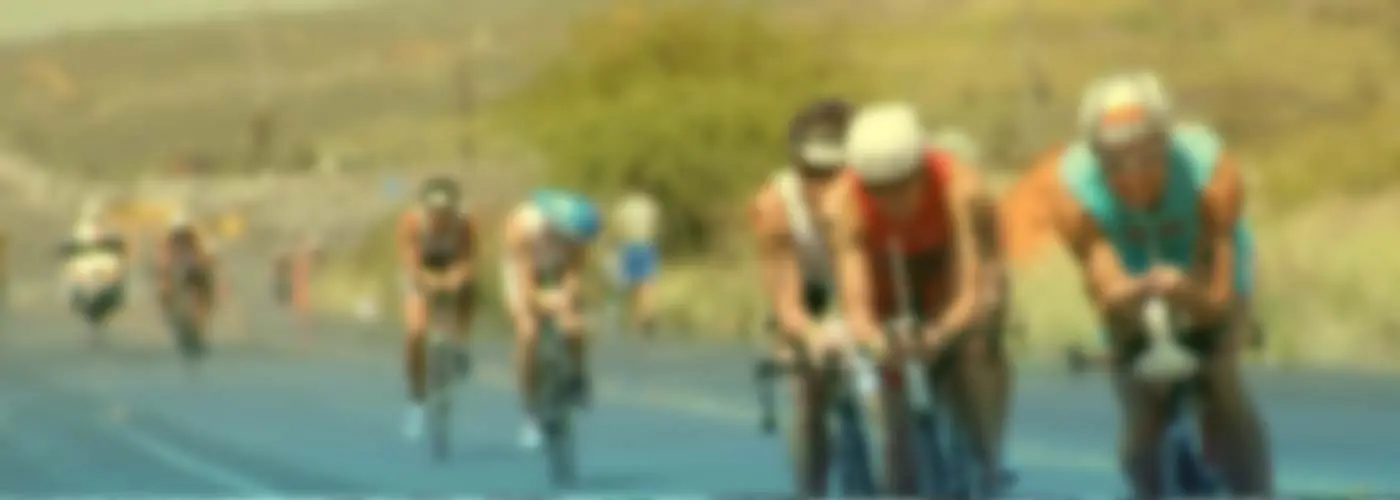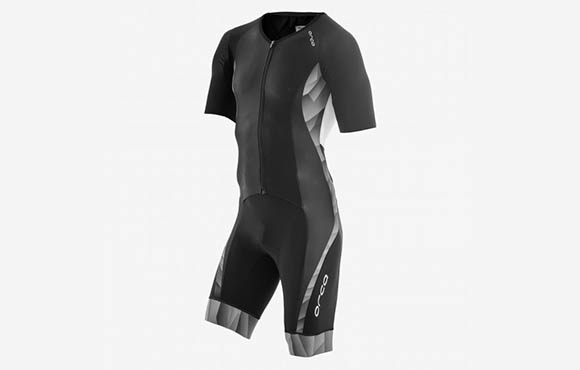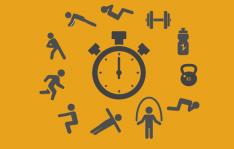Thinking of making a transition from single sport to multisport? It isn't just about learning how to run and ride a bike; it's learning how to do them with proper technique in order to strengthen the right muscle groups and remain injury-free.
Start Slow and Short
2 of 10
Former collegiate swimmer turned pro triathlete, Missy Kuck, cautions swimmers to take it slow and start with shorter distances. You've spent years developing your swimming muscles and learning to be powerful and graceful in the water. Ironically, though, swimmers can sometimes feel completely out of shape when they first start cycling or running. How is that possible? Well, mostly it's because the breathing mechanisms are completely different (have you ever tried taking a breath under water or running with a snorkel?). Plus, the primary working muscle groups are different. Those lower body muscles haven't been developed to be powerful aerobic machines just yet. Take it slow and start with shorter sessions before working your way up to long distance.
Find:
Your Next TriathlonHave Your Run Gait Analyzed
3 of 10
In swimming, technique is everything. The more streamlined you are, the faster your body will go. Running is similar. Although running is a natural sport and most of us have been doing it since childhood, it boils down to good technique if you want to get faster and remain injury-free. Visit a local running store or training center to schedule a thorough run gait analysis. Here, experts will assess your form and videotape your natural foot strike. Within a few minutes, they can give you valuable form cues and even recommend shoes that will work with your natural foot strike. Think of a good pair of running shoes like goggles. There are multiple brands of goggles that fit, but only one is going to feel perfect for you on race day.
Find:
Your Next TriathlonGet a Proper Bike Fit
4 of 10
"You'd be surprised at how much power and speed you can gain when you feel good on your bike," says Jeff Raines, triathlon coach at Austin Aquatics and Sports Academy. "A proper bike fit can literally make or break your cycling and triathlon experience. If you don't feel comfortable, you're going to eventually abandon the sport, which is the last thing you should do."
Sometimes, the bike you're riding may simply be too big or too small. Other times, the changes are more cosmetic, such as raising the saddle or handlebars. There isn't a one-size-fits-all option with bikes since flexibility, wing span, and leg and torso length differ so much from person to person. Don't give up, but don't suffer. If it doesn't feel right, a few small tweaks can make a big difference.
Find:
Your Next TriathlonIncorporate a Cycling- and Run-Specific Strength Training Routine
5 of 10
Swimmers are very familiar with dryland training—hours spent in the weight room working on swim-specific training and movement patterns. Weight training prepares your body for the stresses of the sport, and that added muscular strength leads to improvement in aspects like stroke rate, distance per stroke and overall time. Likewise, spending time off the bike or track in the weight room are equally important as you transition to triathlon. However, the type of exercises you do may look a little different. Swimming, while certainly a full-body sport, taxes your upper body. Cycling and running focus primarily on lower body muscle groups—quadriceps, hamstrings, hips and glutes. Those are the areas that bear the brunt of the training and, if trained properly, build a solid foundation for an injury-free season.
Find:
Your Next TriathlonLearn the Intricacies of the Sport
6 of 10
One of the biggest barriers to entry for triathlon is the enormity of putting together three vastly different sports into one race. The devil is in the details, as they say, and triathlon is full of pesky details. You don't just dive in the water and touch the wall as fast as you can. In triathlon, you leave the water and head to your bike and put on new equipment. After that, you put your bike back and then throw on some running shoes, all the while trying to figure out what to eat and drink.
Find:
Your Next TriathlonWhat in the world do I wear?
7 of 10
While some people can get away with racing in a simple bathing suit, by and large, both men and women race in what is known as a race kit. These are outfits designed specifically for triathlon. The light material dries easily on the bike, the shorts often have a small padding (or chamois) built in for cycling and many brands even have a built-in sports bra for women.
Find:
Your Next TriathlonWhat do I eat and drink?
8 of 10
If you think about it, most swim races last mere minutes—if not seconds! Triathlon is an endurance sport and needs to be treated as such from a fueling standpoint. The numbers of calories to consume will vary from person to person but generally fall into the 200 to 400 calories per hour range. If you're racing a short-distance triathlon, you may need nothing more than a sports gel or quick snack to get you through the entire event. Other athletes rely solely on liquid calories, like Carbo Pro or Tailwind, both powders you mix with your water. For many, these are easier to consume and digest than solid forms of food.
If you have a Garmin or other sports watch that tracks your calories burned, start to pay attention to how much you're burning each hour when training. Are these watches totally accurate? We don't know for sure, but if you've plugged in your proper profile data, at least you will have consistency with the feedback. If you burn 200 calories in a 30-minute run, then, on average you burn about 400 calories per hour. Start by taking in about 50 percent of that amount per hour and adjust from there. The shorter the race distance, the less you will need, but don't attempt to race over an hour on an empty gas tank.
Find:
Your Next TriathlonWhat's with the murky water? Where is my black line at the bottom?
9 of 10
Open water is vastly different than the chlorinated waters of a pristine pool. Swim in open water prior to race day if you can. Practice sighting and breathing in choppy conditions. Likewise, if you plan on wearing a wetsuit for your swim, practice that prior to race day as well.
Find:
Your Next TriathlonHow Do I Pace Myself?
10 of 10
If your main goal is to go out and have fun, a good general rule of thumb for beginners involves measuring your rate of perceived exertion. If you feel yourself breathing really hard and struggling to catch your breath, slow yourself down. This goes for all three disciplines, including the swim. Pace yourself and get your breathing under control. This ensures more calorie absorption, consistent pacing and a satisfying finish.
Another question to ask yourself is, "Is this a pace or effort level I can sustain for the entire race?" If the answer is a resounding "heck no," then slow yourself down. Remember, whether you're racing a sprint or an IRONMAN, you still have to manage your effort levels to last throughout the entire course.
Both swimming and triathlon require a tremendous amount of time, discipline and strength in order to maximize performance gains. Yes, triathlon requires more equipment, but once you make the switch to multisport, you'll likely fall in love with the variety that each discipline has to offer your overall health and wellbeing.







Discuss This Article